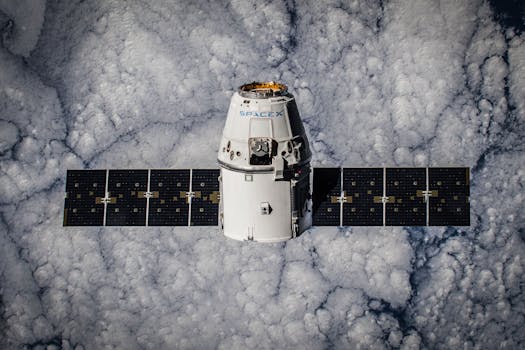
Satellite Telecommunications 2023: What’s New and What’s Next? Satellite telecommunications have revolutionized the way we communicate, access information, and navigate our daily lives. As we navigate the complexities of the digital age, the demand for reliable, high-speed connectivity has never been greater. In this article, we will delve into the latest developments in satellite telecommunications, exploring the new technologies, trends, and innovations that are shaping the future of the industry.
The satellite telecommunications industry has experienced significant growth in recent years, driven by advances in technology, decreasing costs, and increasing demand for global connectivity. One of the most significant developments in the industry is the launch of new satellite constellations, such as SpaceX’s Starlink and Amazon’s Kuiper Systems. These constellations are designed to provide high-speed, low-latency internet connectivity to remote and underserved communities around the world.
Another key trend in satellite telecommunications is the adoption of new technologies, such as 5G and edge computing. These technologies enable faster data processing, lower latency, and greater connectivity, making them ideal for applications such as IoT, autonomous vehicles, and smart cities. Additionally, the use of artificial intelligence and machine learning is becoming increasingly prevalent in the industry, enabling satellite operators to optimize their networks, predict maintenance needs, and improve overall efficiency.
In terms of innovation, the satellite telecommunications industry is witnessing a surge in the development of new satellite-based services, such as satellite-based broadband, satellite-based IoT, and satellite-based navigation. These services are enabling new use cases, such as remote monitoring, precision agriculture, and emergency response. Furthermore, the industry is seeing a growing focus on sustainability, with satellite operators prioritizing environmental responsibility and reducing their carbon footprint.
As we look to the future, it is clear that satellite telecommunications will play an increasingly important role in shaping the global communications landscape. With the ongoing development of new technologies, trends, and innovations, the industry is poised for significant growth and expansion. Whether it is providing connectivity to remote communities, enabling new applications, or driving sustainability, satellite telecommunications are set to have a profound impact on our world.
The integration of satellite telecommunications with other technologies, such as 5G and edge computing, will be critical to unlocking the full potential of the industry. By leveraging these technologies, satellite operators can provide faster, more reliable, and more secure connectivity, enabling new use cases and applications. Moreover, the use of AI and machine learning will continue to drive innovation, enabling satellite operators to optimize their networks and improve overall efficiency.
As the satellite telecommunications industry continues to evolve, it is essential to stay informed about the latest developments, trends, and innovations. By doing so, we can unlock the full potential of satellite telecommunications and harness its power to drive positive change and improve lives around the world.
One of the key challenges facing the satellite telecommunications industry is the need for greater sustainability. As the industry continues to grow, it is essential that satellite operators prioritize environmental responsibility and reduce their carbon footprint. This can be achieved through the use of more efficient technologies, such as electric propulsion systems, and the implementation of sustainable practices, such as recycling and responsible disposal of satellites at the end of their life.
In conclusion, the satellite telecommunications industry is experiencing a period of significant growth and transformation, driven by advances in technology, decreasing costs, and increasing demand for global connectivity. As we look to the future, it is clear that satellite telecommunications will play an increasingly important role in shaping the global communications landscape, enabling new applications, driving sustainability, and improving lives around the world.



